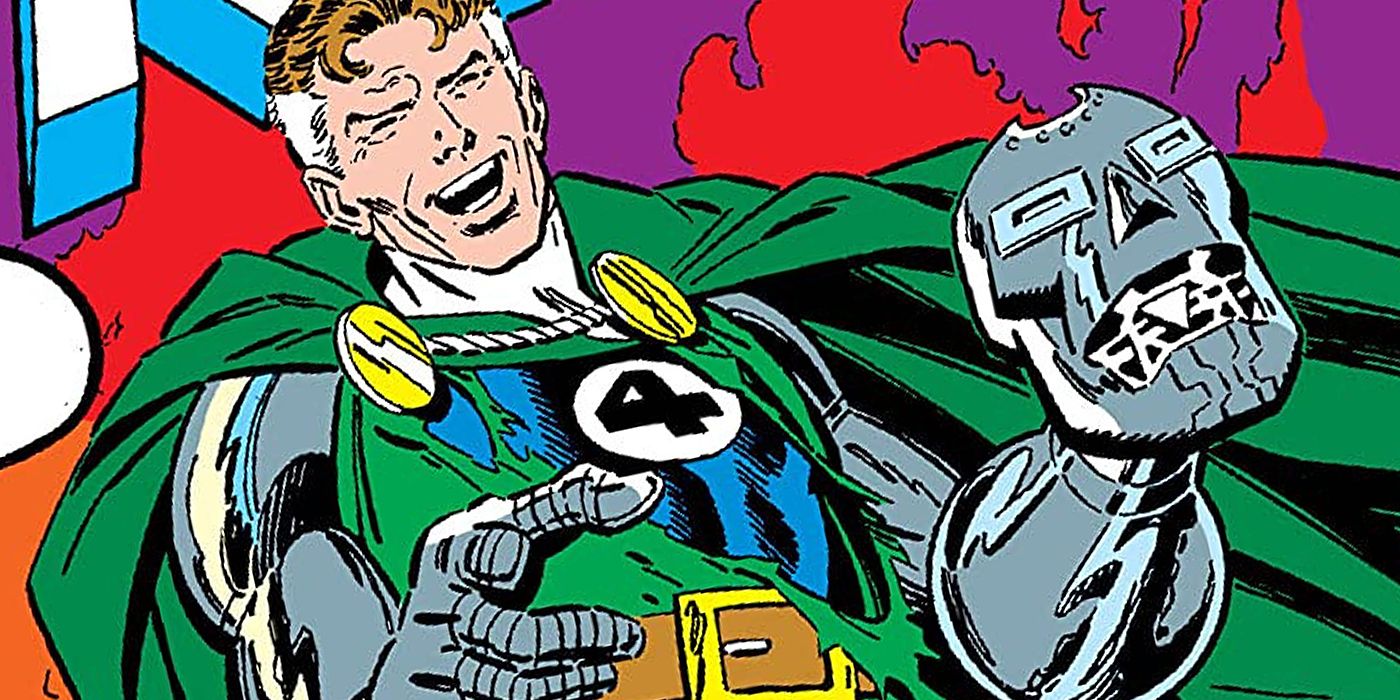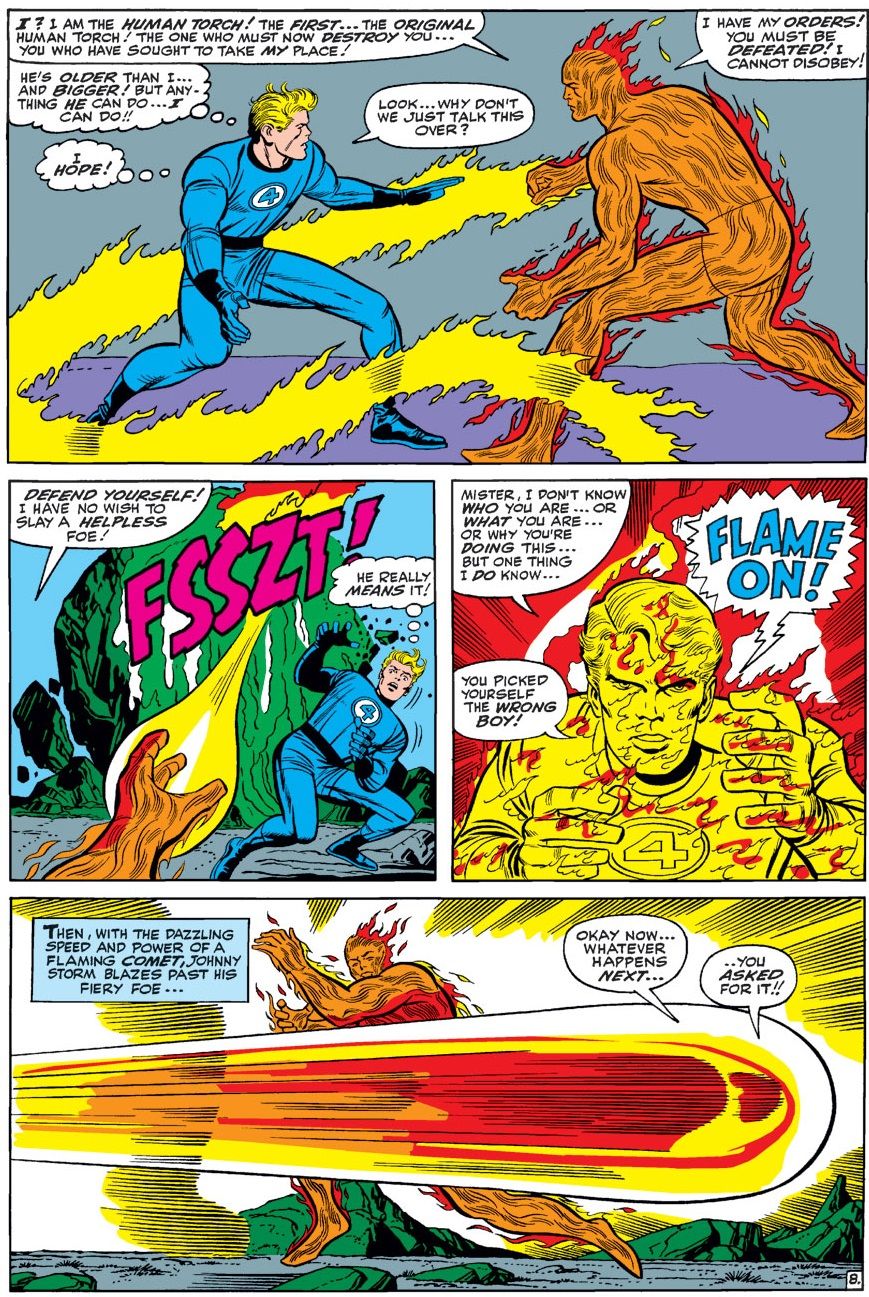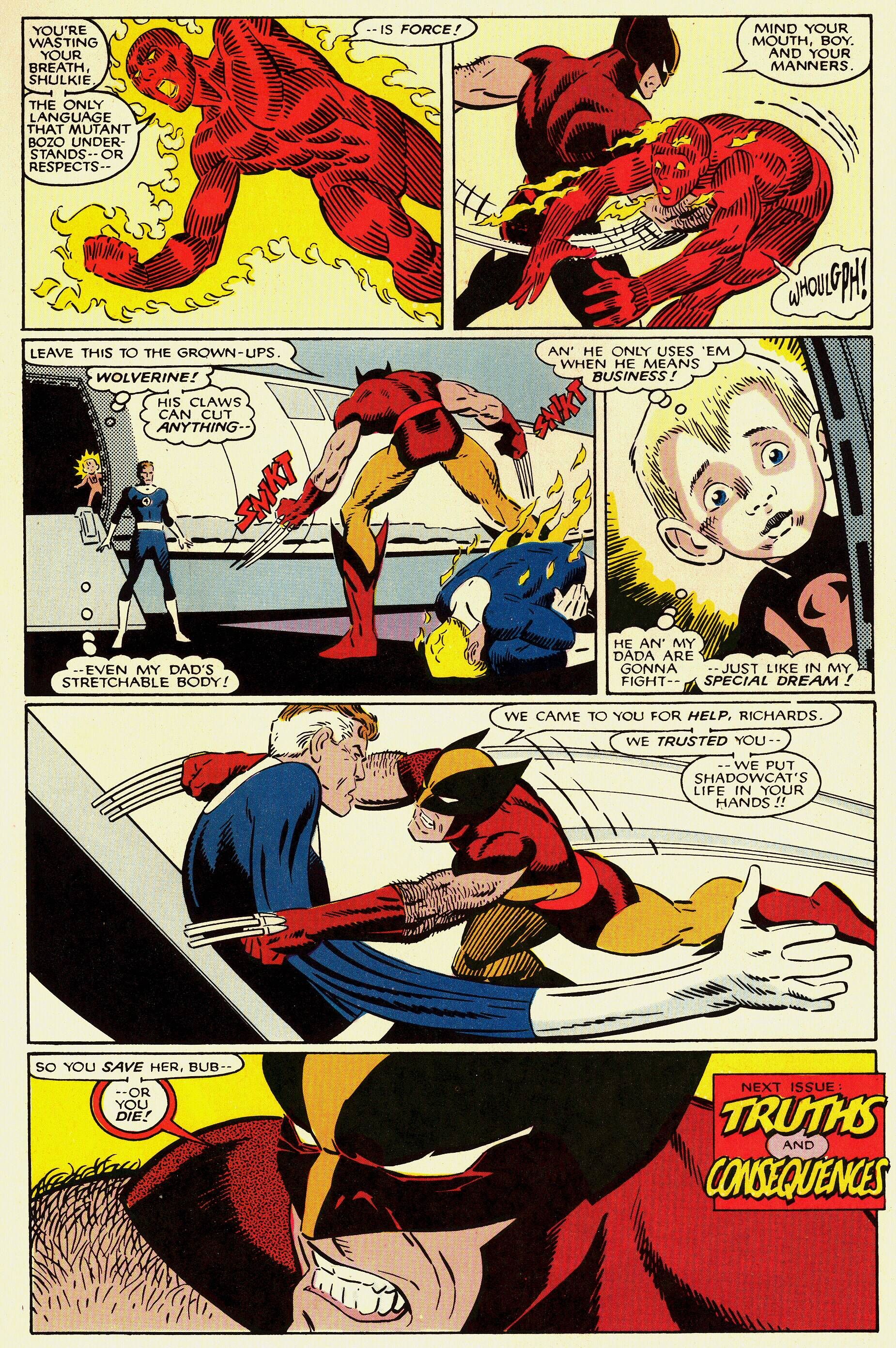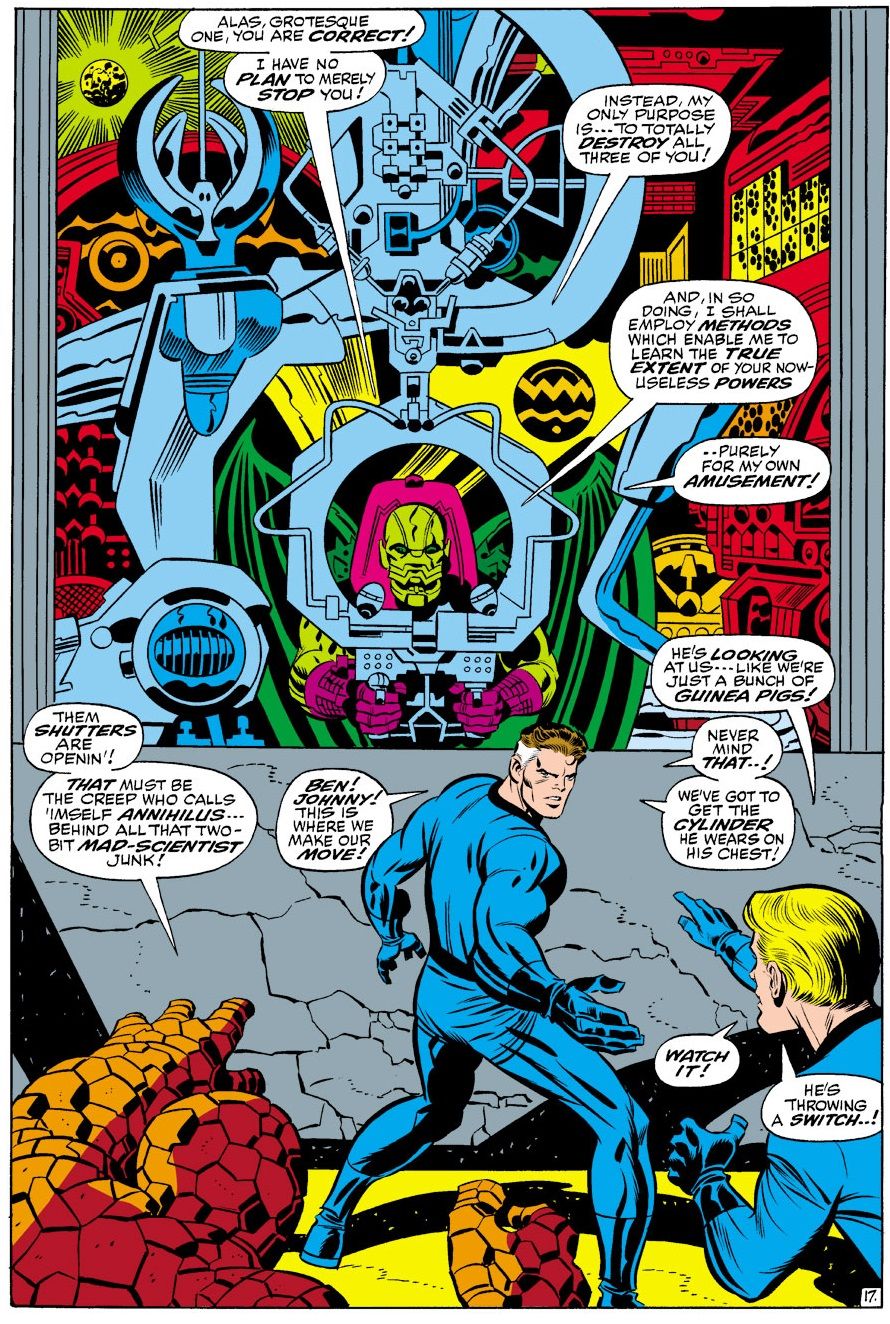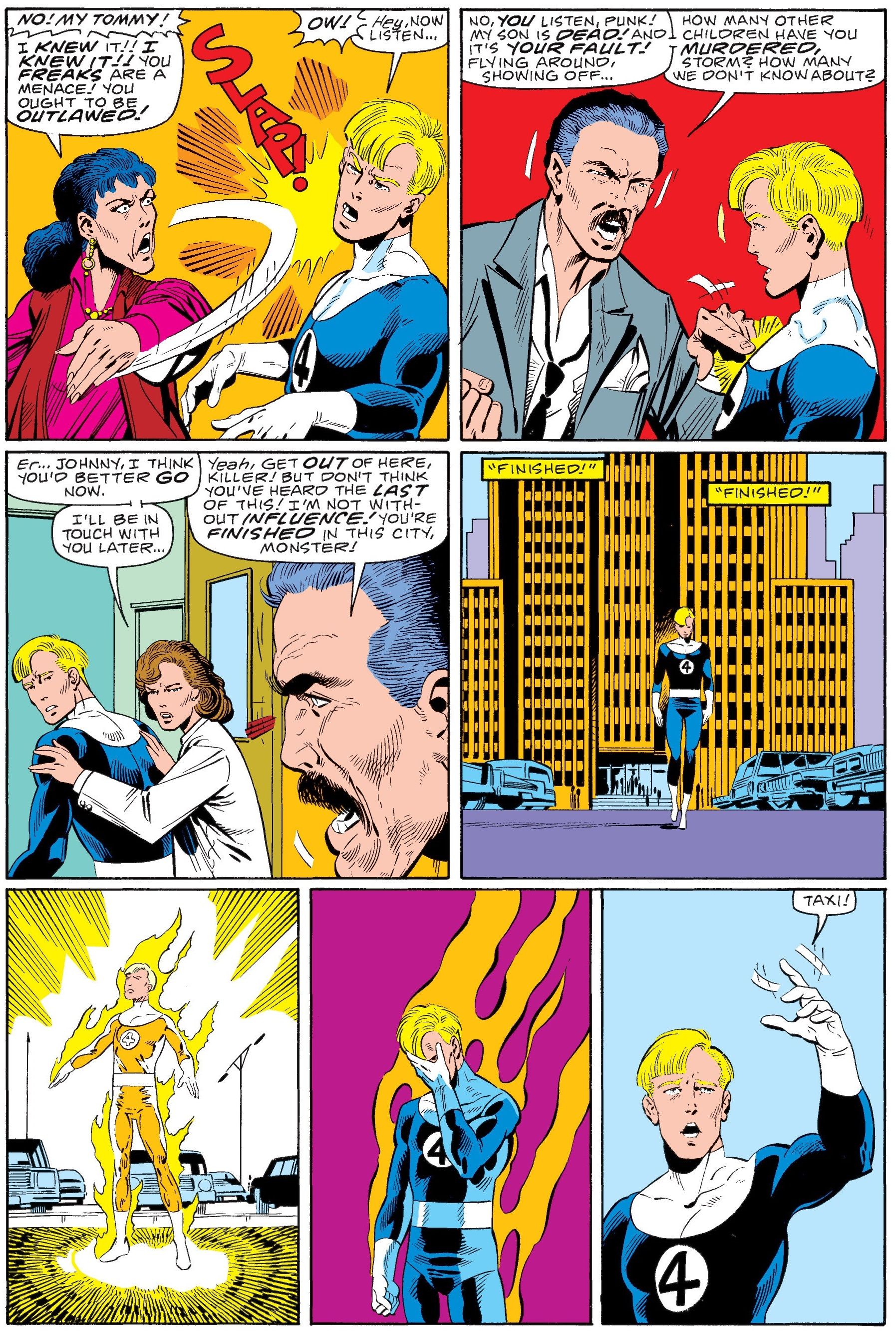Today, we look at your picks for #40-37 of the greatest Fantastic Four stories ever told!
As always, you voted, I counted the votes and now we count them down, four at a time. If I don't add a date for the series, it means it is the original volume of whatever series I'm talking about.
40. Fantastic Four Annual #4 "The Torch That Was"
When Martin Goodman told Stan Lee to create a new superhero series to compete with DC's then-booming superhero revival of the late 1950s/early 1960s, Goodman initially just wanted Lee to do a revival of Marvel's previous superhero line, basically a redo of what Lee had done in the early 1950s when Captain America, Human Torch and Sub-Mariner were all revived to kick some Communist behind. However, Lee wanted something new and so Jack Kirby (and presumably Lee) worked together on a brand-new concept that was more akin to Kirby's Challengers of the Unknown idea from the 1950s, only with a single nod to Goodman's initial request, which was to have a Human Torch on the team, only a brand-new teenaged literally human version of the Human Torch.
Johnny Storm's connection to Jim Hammond, the original android Human Torch, was basically nonexistent in the early days of the Fantastic Four (as when the characters debuted, it was clearly intended as a fresh continuity, it was only over time that Kirby and Lee slowly but surely brought back the Golden Age Marvel heroes).
Finally, in the fourth Fantastic Four Annual (by Kirby, Lee and Joe Sinnott), the original Human Torch made his return, this time under the control of the Mad Thinker...
The Mad Thinker also invented another artificial intelligence in the same issue, known as Quasimodo, and when Jim turned on the Mad Thinker to defend the Fantastic Four, it was Quasimodo who seemingly "killed" Hammond once and for all. The issue then ends with Quasimodo bemoaning his fate as a conscience with no autonomy. These issues were always packed with some fascinating morality plays.
39. Fantastic Four Versus the X-Men #1-4
When miniseries first started coming out at Marvel, they made a big deal about them and that continued throughout most of the 1980s (there were a few throwaway exceptions, of course) and that was also the case with the Fantastic Four vs. the X-Men miniseries in late 1986, which was tied directly into the events of the X-Men titles at the time, specifically the "Mutant Massacre," which ended with Kitty Pryde trapped in her intangible state. The X-Men turned to Reed Richards to cure her with a machine that Magneto knew that Reed had developed that he was sure would work. Reed, though, tells the X-Men that they were mistaken and that the machine will not actually work and Wolverine, well, he does not take that well...
Meanwhile, though, Sue has found a journal of Reed's that suggested that Reed KNEW that the Fantastic Four would be exposed to cosmic rays and that he PLANEND for it to happen because he wanted to see what would happen. This was later revealed to be a fake by Doctor Doom (or was it?). Doom, meanwhile, offered to cure Kitty and that was also a whole conflict between the X-Men and the Fantastic Four. Jon Bodganove and Terry Austin did the artwork.
38. Fantastic Four Annual #6 "Let There Be...Life"
This issue sees Reed, Johnny and Ben head into the Negative Zone to get a device that could help Sue, who is the middle of labor with her and Reed's son. The problem is that the object that Reed needs is also the centerpiece of the power supply of the villainous Annihilus, who makes his debut in this issue, as well..
We often talk about how Jack Kirby would introduce more amazingly out there concepts in a single issue than most people would in an entire story arc, and this journey into the Negative Zone is probably the highlight of that sort of thing, as Reed, Johnny and Ben's journey through the Negative Zone is overflowing with fascinating new concepts as we explore the Negative Zone and there's also this sense of manic energy coursing throughout everything, as well, as things get more and more intense as the three heroes try to escape the Negative Zone to get back to Sue to hopefully help save Reed and Sue's baby.
Don't worry, though, things work out and Franklin Richards is born at the end of the issue, making this issue notable for two different major first appearances!
37. Fantastic Four #285 "Hero"
After the success of Secret Wars and seeing how much success DC was having by forcing Crisis on Infinite Earths crossovers into its regular titles (with markings on the cover noting that they were Crisis tie-ins), Marvel quickly launched Secret Wars II, which was extremely linked into the Marvel Universe over the course of the sequel series (the corner squares announcing a Secret Wars II tie-in would later be jokingly reference to by fans as the "Nabisco corners," due to its similarity to the logo of Nabisco). In general, the tie-ins did not exactly stand out, but John Byrne used them to much greater effect than most, with "Hero" probably being the highlight of the bunch.
It opens with a doctor writing an autopsy report for a dead boy and then we cut to the life of a little boy, Tommy Hanson, who is the world's biggest Human Torch fan. Tommy's life is low on highlights, as his parents ignored him and he is bullied at school. His one joy is his fandom for the Human Torch. So when the eccentric maintenance man at Tommy's building points out that the model airplane fuel that he keeps on the roof of the building is dangerous enough that it would turn Tommy into a real-life Human Torch, Tommy, being a little kid, takes that literally and lights himself on fire.
Johnny visits the boy in the hospital, who dies right after telling Johnny that he did it to be like Johnny, something that the kid's parents don't take well...
Johnny decides to quit being a superhero, but he is visited by the powerful Beyonder, who uses his powers to show Johnny the past and how he knows that Johnny blames himself for Tommy's death, but it is clear that Johnny specifically gave Tommy something to LIVE for. Johnny decides to remain a superhero.

